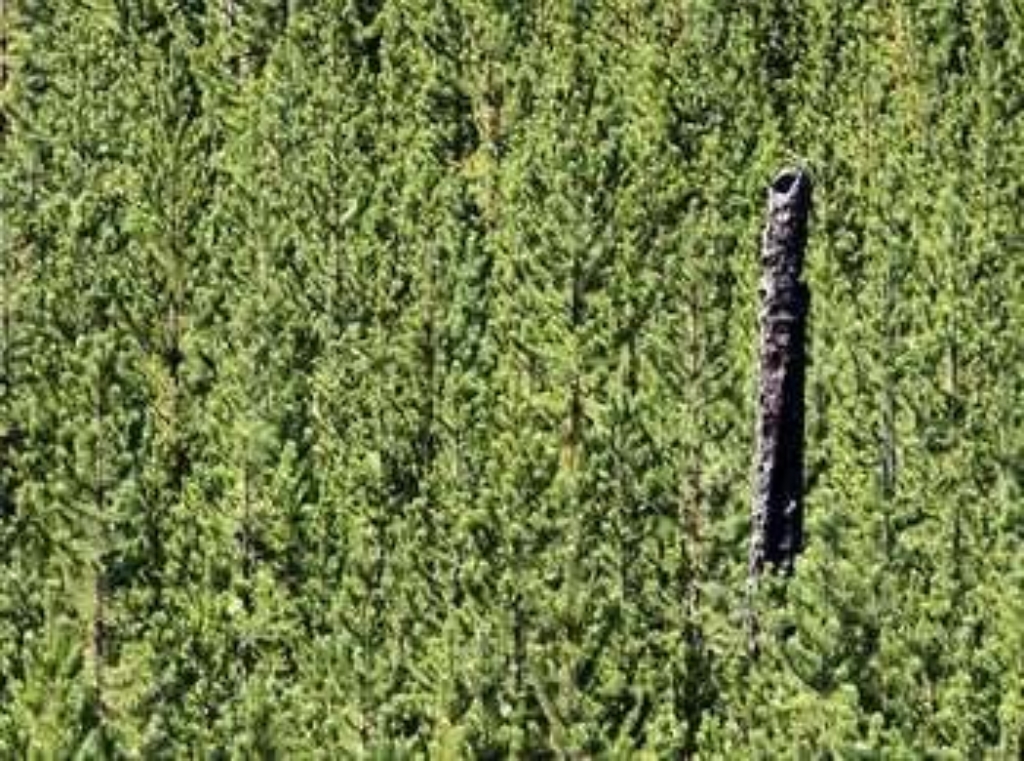
Forests cover roughly 80% of Yellowstone and lodgepole pine comprises nearly all of that canopy.
Some American Indian tribes used this tree to make the frames of their tipis or lodges, hence the name “lodgepole” pine. The log walls of the Old Faithful Inn are made with lodgepole pine.
The volcanic rocks beneath much of Yellowstone form nutrient-poor soils. These areas generally have extensive stands of lodgepole pine, which are drought tolerant and have shallow roots that take advantage of the nutrients in the soil.
Lodgepoles are the only pine in Yellowstone whose needles grow in groups of two. They can be up to 75 feet tall. Lodgepole pine trees have very thin bark and can be killed by ground fires.
Fire Rejuvenates Forests
Wildland fire is an integral, dynamic process. Fires rejuvenate forests on a grand scale. Some species of plants survive the intense burning to re-sprout. Some cones of lodgepole pines pop open only in heat generated by fires, spreading millions of seeds on the forest floor.
After fire sweeps through an area, mammals, birds, and insects quickly take advantage of the newly created habitats. Fires recycle and release nutrients and create dead trees or snags that serve a number of ecological functions, such as the addition of organic matter to the soil when the trees decompose.
Is there something we missed for this itinerary?
Itineraries across USA


















































